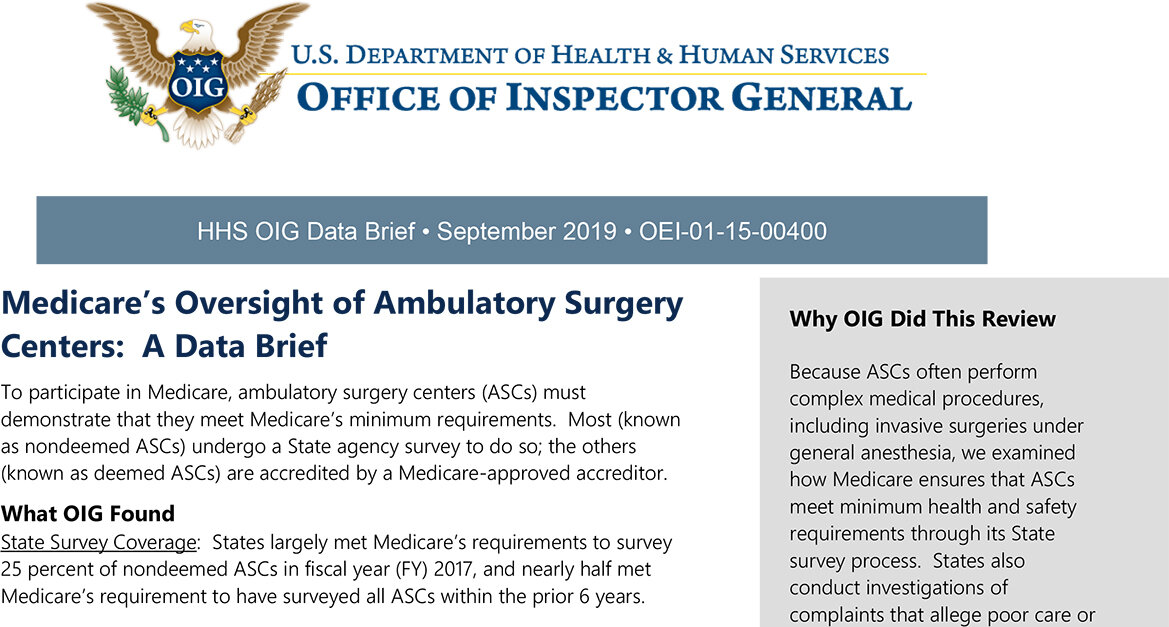The HHS Office of the Inspector General (OIG) has issued a new report suggesting many ambulatory surgery centers (ASCs) are coming up short in their efforts to meet infection control requirements.
The report claims that more than three out of every four Medicare-certified ASCs were cited for at least one deficiency during their most recent state-government inspection, and one out of every four had a serious — or "condition-level" — deficiency. Infection control deficiencies were the most frequency cited type of deficiency from fiscal year (FY) 2013 to FY 2017, comprising roughly one-fifth of all violations.
Furthermore, states cited 55% of all nondeemed ASCs with one or more infection control deficiency in these ASCs' most recent certification surveys — easily tops on the list of the types of Conditions for Coverage (CfC) deficiency citations. Coming in second was pharmaceutical services-related deficiencies (37%), with environment deficiencies rounding out the top three at 33%.
Infection control also had the highest percentage of condition-level deficiencies at 12%. The OIG defines a condition-level deficiency as indicating that "… substantial noncompliance with multiple standards of a CfC adds up to pervasive noncompliance, or that noncompliance with one or more standards poses a serious threat to patient health and safety."
Patients also flagged infection control as a significant concern. Between FY 2013 and FY 2017, the most common complaint allegations related to quality of care and treatment (35%). The second most common was infection control (24%), with patient rights coming in third (19%).
The OIG states that it completed its review and report by analyzing state data on ASC certification surveys for nondeemed ASCs and complaints about deemed and nondeemed ASCs from FY 2013 to FY 2017, as provided by Medicare. Using these data, OIG assessed state survey performance against Medicare's requirements and analyzed trends in deficiency citations from state surveys and trends in complaint surveys.
Among its conclusions: The Centers for Medicare & Medicaid Services (CMS) can use the report to help focus its efforts on "… ASCs' recurring challenges in meeting health and safety requirements, especially for infection control."
In need of CMS and/or accreditation survey assistance? Infection Control Consulting Services can help your organization with survey preparation and developing a plan of correction, among many other infection control services.






